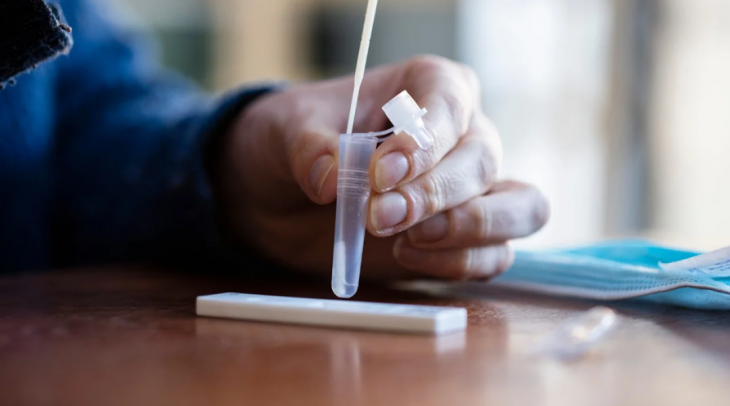Impacted by the Federal Shutdown? Get Resources and Support
We’re launching a new website for Baltimore City!
Check out the new beta site and share your feedback.

Testing is an important way to protect those around you from the spread of COVID. Remember, even if you're confident that you can quickly recover from COVID, there are many people in Baltimore who are at high risk for severe infection, hospitilization, or even death. That means that if you have symptoms, you should immediately test yourself so that, if you do have COVID, you can take the proper actions to prevent its spread.
You can be tested for COVID at many local pharmacies, doctors' offices, and urgent care centers. You can also test yourself at home using a rapid test kit.
Rapid test kits - also called home tests, self-tests, or over-the-counter tests - are COVID-19 tests that can be taken anywhere and produce quick results.
These tests are often sold or given directly to individuals and can be used by people at their homes, or any location. They do not need to be performed in a doctor’s office or COVID testing site.
The results are ‘rapid’ or available right away. No samples need to be sent to a lab.
You can use a rapid test kit if you have any COVID-19 symptoms or have been exposed to someone with COVID-19.
Even if you don’t have symptoms or have not been exposed to COVID-19, using a self-test before gathering indoors with others can give you information about the risk of spreading COVID-19. This is especially important before gathering with unvaccinated children, older individuals, those who are immunocompromised, or individuals at risk of severe disease.
Test kits are designed for personal use only. If you need a documented result for travel, employment, return to school, or other purposes, you should verify whether or not a rapid test result will satisfy the testing requirement.
Please be aware of the expiration date on the test kit.
The most common type of COVID test besides the at-home rapid test kits are PCR tests. A PCR test is administered by a medical professional in a pharmacy, doctors' office or urgent care center, and a sample is sent away to a lab for analysis. The lab looks for the genetic material of the COVID virus within the sample. The results may take 1-3 days from the time of taking the test. A PCR test is the best test for a highly accurate diagnosis.
A positive test result means that you are likely infected with the COVID-19 virus. Even if you have no symptoms and feel well, you should assume you are contagious and take the following steps:
1. Isolate at home. Limit contact with others for at least 5 days, especially anyone who is at high risk of severe disease if they become sick. These actions can help limit the spread of COVID-19 and other respiratory viruses in your home:
2. Contact your healthcare provider. Seek follow-up care as soon as possible - you may need additional testing and treatment like antiviral medications to ensure your symptoms do not become worse. If you have emergency warning signs, seek emergency medical care right away.
A negative test result usually means the virus that causes COVID-19 was not found in your sample. If you took the test while you had symptoms and followed all instructions carefully, it may mean that you are infected with a different respiratory virus.
However, it is possible for a rapid test to give a negative result in some people who do have COVID-19. This is called a false negative. This can happen if the testing instructions are not followed carefully, or if you tested very early in your infection. If your symptoms continue, you can test again in the next 1-3 days to see if the results are different.
If you do have symptoms - even if your COVID test is negative - follow the instructions above to prevent spread of any respiratory illness.